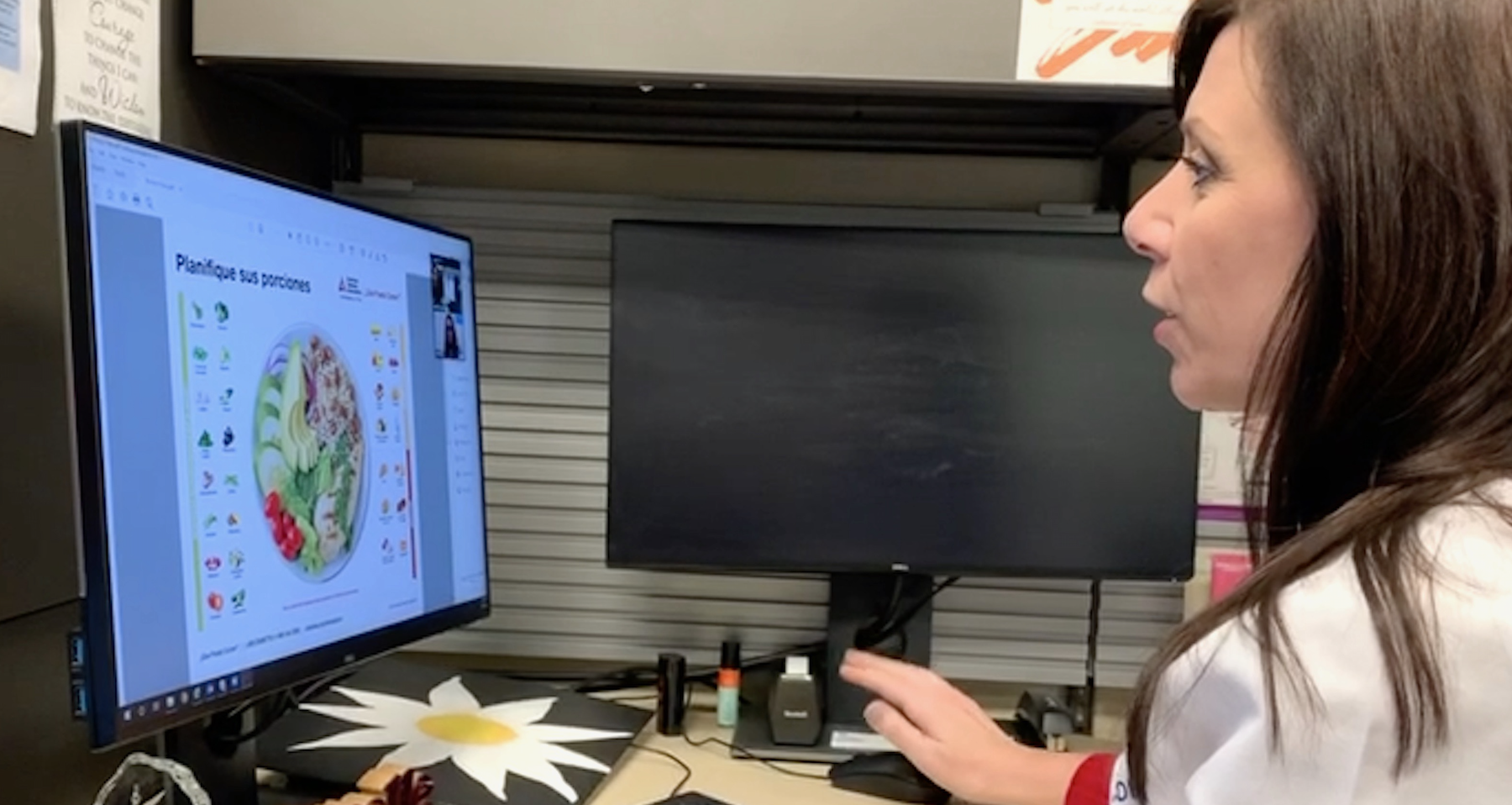Avoid weight gain during the pandemic

Janelle Schnake is a registered dietitian and a master licensed diabetes educator in the Barnstable Brown Diabetes Center pediatric and adult diabetes clinics.
For most of us, COVID-19 has disrupted our routines, and changes such as working from home or losing a job may lead to increased stress. Stress and boredom are the top two causes of mindless eating – and being cooped up at home with easy access to food can also lead to overeating.
Healthy eating and physical activity are the two main pillars of a healthy lifestyle. This helps maintain our current body weight and/or assists with weight loss. Here are five healthy tips for both.
Healthy eating at home:
- Make a schedule for meals and snacks. Follow your “normal” work eating schedule as much as you can.
- Plan lunches and snacks – and skip the drive-thru. Plan out your meals and snacks to help streamline your grocery essentials list.
- Avoid using the kitchen as your workspace. Only visit the kitchen to sit down for a meal or snack.
- Drink more water. People eat more when they’re dehydrated because they mistake the feeling of thirst for hunter – men should drink 15.5 cups (3.7 liters) of fluids a day, and women should drink 11.5 cups (2.7 liters).
- Manage alcohol consumption. Isolation and stress could lead to excess drinking – which could mean excess calories. Limit alcoholic drinks, with one serving per day for women and no more than two servings per day for men.
Staying active home:
- Get dressed and ready for your day. The simple act of changing clothes is a signal that it’s time to wake up and move – and if you went to the gym before or after work, keep up this routine. Lay out your workout clothes as a reminder to get active.
- Set alarms – and not just to wake up. Set reminders to drink water or take an exercise break.
- Walk while you talk on the phone.
- Take a walk during your lunch break. If the weather is nice, get outside for some vitamin D.
- Set a daily appointment in your work planner to get 20 to 30 minutes of exercise. There are numerous YouTube channels or apps – like the seven-minute workout app – that offer free content. Research shows that working out in small segments is as beneficial as doing it all at once.
And as always, be sure you’re following the most up-to-date guidelines for safe and healthy practices during the COVID-19 pandemic. For more information, visit our COVID-19 informational hub.





